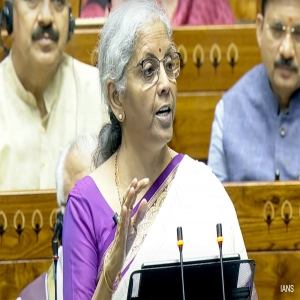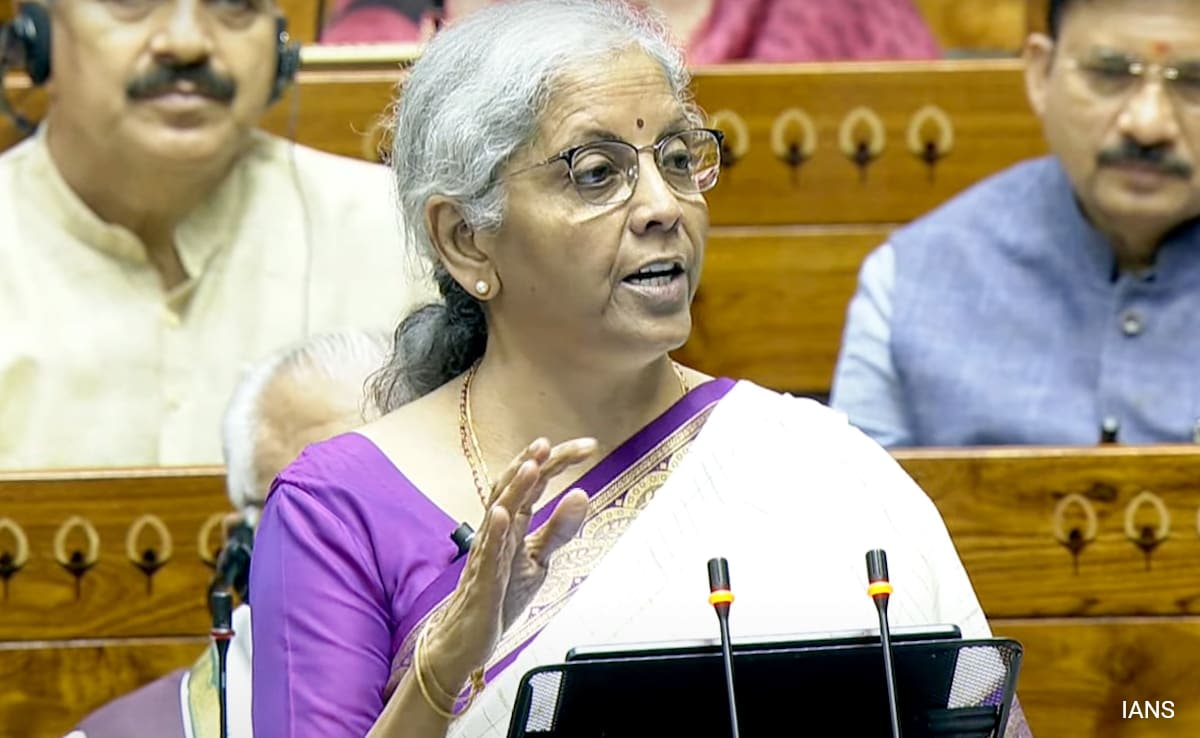
.png) Jaswant Kaur
Jaswant Kaur

The first day of February has come and gone amidst the hullabaloo witnessed by the national Capital due to the Delhi elections. Within minutes of the Budget speech, headlines about the middle class having more income in their hands popped up, painting a rosier-than-ever picture for everyone. For many, it was certainly the most-awaited moment. However, the relief has been granted only to those who have opted for the new regime—one that does not incentivise savings, investments, or even giving back to society.
Nothing significant has been offered to those who still believe in making small investments and savings, not just to save taxes but also to mitigate various risks associated with life. The budget affects 1.46 billion people in the country, including children, women, and several marginalised groups that form the backbone of this nation.
As someone who has been managing the finances of a grassroots organisation, one thing that has always been on this writer's mind while budgeting for the upcoming financial year is the number of lives the organisation plans to touch, directly or indirectly. Without this estimation, the exercise becomes far more challenging, as it becomes difficult to determine how much money should be allocated to which initiative—whether for infrastructure, human resources, or other areas.
It is equally important to understand the vulnerabilities faced by the target group, the intersecting factors that amplify these vulnerabilities, the inflation rate, and more, to provide them with a level-playing field focused on equity and inclusivity. Simply put, the budget should be based on a needs analysis, keeping in mind the vision set for the organisation.
Extrapolating this concept to the lives of 1.45 billion people in this country, should the budgeting exercise not follow these basic principles? Many would argue that the economic survey is nothing but a needs analysis. While it does provide a brief overview, does it present an actual needs analysis? The answer is no. Another response might be that conducting such an annual analysis would be difficult for a country of our size.
True, a needs analysis would not be easy. However, one exercise that could have provided answers to many questions is the census, which was due in 2021. The pandemic certainly disrupted the plan. For someone entrusted with the task of budgeting, analysis, and forecasting, the census could have provided a much clearer picture of the demographics, needs, and vulnerabilities faced by the population.
The preface of the economic survey itself acknowledges how rapidly things are changing. "The world is perhaps evolving more rapidly than we realise," it states. This statement is undeniably true. So, how can we base our budgets on more than a decade and a half old data? When terms like "middle class" and "marginalised" are used, how accurate are we in representing such population groups?
This is the larger question that needs to be addressed, especially when the Union Budget 2025-26 is expected to drive India toward the vision of 'Viksit Bharat.' Without knowing the demographics, income levels, caste composition, and more, how can the budget do justice to the demands and needs of those at the bottom of the pyramid, especially when several surveys and estimates have shown that post-pandemic, there have been drastic changes in the income levels of what constituted the pre-pandemic middle class or the poor?
Turning to one of the most vulnerable population groups—children and women—the budget does not offer much. Whether for education, child development, or protection, the allocations remain more or less the same. The overall share that children receive remains abysmally low, a trend that has continued since 2012-13. Imagine, a population group that constitutes more than a quarter of the total population has not even received 5% of the total budgetary allocation!
How can the budget be termed progressive in achieving the vision of a Viksit Bharat when children, said to be the foundation of any nation, have not received their due share? A few important schemes like Samagra Shiksha, PM Schools for Rising India, and pre-matric scholarships for certain categories such as Scheduled Castes, Other Backward Classes, Economically Backward Classes, and Denotified Tribes have seen increases ranging from 0.26 to 42.86%. These schemes have been included in Part A (schemes with 100% provision for children), with the highest budgetary allocation of 76% made to such initiatives. However, if one delves deeper into the estimated needs, the allocation is far from satisfactory.
Several schemes within Part A have seen reduced or zero allocations. For instance, the education scheme for madrasas and minorities has seen a drastic cut of 99.50% compared to last year's budgetary estimates. Similarly, the budgetary allocation for post-matric scholarships for minorities has been reduced by 63.86%, reflecting poorly on the intent behind this effort. Overall, the educational needs of children have been prioritised, receiving 77% of the total budget for children, followed by development needs at 16.55%. Child protection has received a mere 1.57%.
As far as gender budgeting is concerned, the story is no different. Despite a few positive announcements, the government seems to have misunderstood the requirements of this group as well. The Ministry of Women and Child Development received a modest 3% increase in its budget, totalling ?26,889.69 crore for the fiscal year 2025-26.
This slight rise is deemed insufficient to tackle the myriad challenges faced by women and children nationwide. Key schemes like Saksham Anganwadi and POSHAN 2.0, designed to combat malnutrition and support early childhood care, were allocated ?19,216.08 crore. However, given the widespread issues of malnutrition and inadequate early childhood development, this allocation may not meet the actual needs.
Despite India's alarmingly high rates of maternal mortality and anaemia among women, the budget failed to significantly boost healthcare initiatives. The government's own data shows that 53% of women aged 15-49 are anaemic, yet maternal health programs did not see a major funding increase.
Economic empowerment for women remains another neglected area. Women's labour force participation stands at just 40.3%, compared to 73% for men, yet the budget offers no major incentives to boost employment among women or support female entrepreneurs. The government announced plans to launch a "comprehensive multi-sectoral 'Rural Prosperity and Resilience' programme" in partnership with states, focusing on 5 lakh rural women, young farmers, rural youth, marginal and small farmers, and landless families. However, there is no clarity on the budget allocated for this scheme.
'Mission Shakti'—an integrated women's empowerment program—has also not received much attention in the budget. The scheme was divided into two components: Samarthya (comprising erstwhile schemes like Ujjwala Homes, Swadhar Greh, Working Women Hostel, the National Creche Scheme for children of working mothers, and Pradhan Mantri Matru Vandana Yojana) and Sambal (comprising existing schemes like One Stop Centres, Universalisation of Women Helpline, Beti Bachao Beti Padhao, and a new component of Nari Adalat).
Despite the increase in crime rates against women and growing needs, Samarthya has received a reduced allocation of 16.73%, while there has been no change in allocations for Sambal. The scheme for providing assistance to victims of sexual violence below the age of 16, previously funded by the Ministry of External Affairs, has been discontinued entirely.
The gender component in MNREGA has been increased, but the overall budget has not seen any rise. The only scheme that has received a considerably increased allocation is the PM Kisan Samman Nidhi Yojana, with its gender component also seeing a boost.
Overall, the Budget 2025-26 is a missed opportunity. It has failed to make substantial investments toward the empowerment of women and the protection of child rights. The tokenistic increases in a few initiatives have failed to impress, given the overall declining trend. The budget clearly reflects misinformed priorities due to the lack of factual information from the census regarding the basic needs of nearly half the population—women and children.